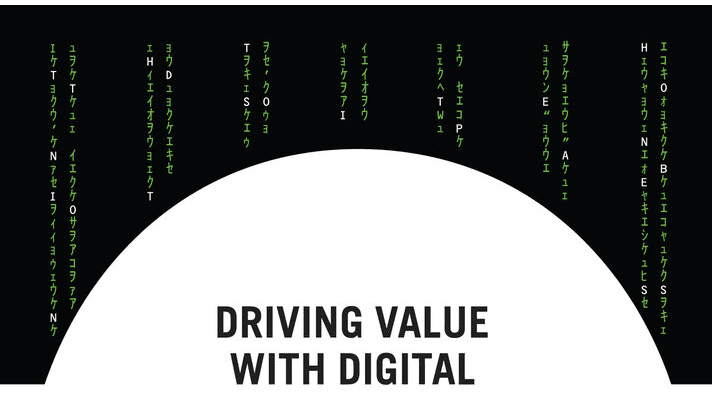
10 May CHAPTER ONE
The physical book has been updated to version 6 but this is the original version of chapter 1.
It isn’t by accident that the most valuable companies in history are today’s digital companies. When you think “innovation,” the engine of growth, your first thoughts aren’t traditional automobile manufacturers, taxicab companies and bookstores. Instead you think Tesla, Uber and Amazon—companies that use digital to create great products, great services and great business models.
Until recently, digital companies were synonymous with tech companies, but high technology now makes it practical to digitize the offline products and services of traditional companies to bring them online.
These data-driven companies disrupted their industries and invented new ones, and in the process, they became the most valuable companies in their industries, and in history. Until recently, digital companies were synonymous with tech companies, but high technology now makes it practical to digitize the offline products and services of traditional companies to bring them online. This process is called smart digital transformation, and it enriches traditional companies with many of the same advantages previously enjoyed only by tech companies. The digital operating partner on the PE operations team identifies, plans and executes digital initiatives to produce meaningful revenue growth, improved margins and expanded multiples.
TRADITIONAL COMPANIES
First, let’s start with some definitions. For our purposes traditional companies are companies like traditional auto companies, taxicab companies and bookstores. They sell nondigital products or services used offline in the physical world. Traditional companies create value offline and predominantly operate offline too. Traditional products are manufactured in atoms by scientists, engineers and tradespeople and are not connected to the traditional company’s business (systems) after being sold. Industrials and manufacturing immediately come to mind as traditional company sectors, but due to the physicality of the definition, applicable sectors also include aerospace, healthcare, infrastructure, energy and natural resources. The traditional company is usually mature, but it can also be a younger company that just hasn’t digitized yet, such as those companies in biotech and retail. In other words, traditional companies are most companies, and that’s a good thing, because it means smart digital value creation is applicable to most of the companies in a buyout firm’s portfolio. (See Figure 1.1.)
DIGITAL COMPANIES
Digital companies are tech companies like Tesla, Uber and Amazon. Technology is their product, and it’s usually represented as a platform or an app. These companies were born digital and sell products and services that create value online and predominantly manage operations online too (Figure 1.2). Digital products are manufactured in bits by programmers, hardware designers and data scientists and are tethered to their digital company’s business (systems) after being sold. And while they may also employ atoms to operate in the physical world, from a value perspective, the atoms are simply a vessel to be operated by software and driven by data. Digital companies are not good candidates for digital transformation because they are already digital and data driven. These companies include but are not limited to those that operate within purely tech sectors such as software, telecom and, well, the technology sector.
DIGITAL VERSUS TRADITIONAL
Besides being used in the digital world versus the physical world, and besides consisting of bits (software) instead of atoms, the most profound difference between digital and traditional companies is that digital companies are data-driven companies. Digital companies are connected to their customers 24 hours a day, 7 days a week, with a high-bandwidth network connection between the customer/user and the digital company. It is through this customer-product-company business system connection that companies get to know their customer. They know how the customer uses their products (usability), they know what the customer uses their products for (utility), and perhaps most importantly, they know how their customer makes money from using their products. Customer data is one of the intangible assets that’s made digital companies the most valuable companies. Value that’s created by innovating their products and inventing new ones. Value that’s created by innovating their business models and inventing new ones. This same data can also be used to increase margins through operational efficiency, but most of the value comes from growing the top line with amazing products and dominating industries with amazing business models, all of which lead to insurmountable advantages over their traditional competition.
Sounds like hyperbole, but that’s exactly what Tesla, Uber and Amazon are doing today along with thousands of other well-run digital companies. Let’s compare Tesla with, say, GM. While the list is long, I’ll just focus on a few areas of product and business model innovation and invention that differentiate Tesla.
•••
The book’s original 8 chapters are freely available on this site if you register with the form below checking “Send book’s intro chapter & book password and add me to your mailing list!” After registering we’ll email you the book password to access all the chapters.
When you have the book password click here to continue reading this chapter.
However, if you would like the full book, updated, formatted and bound, you can









